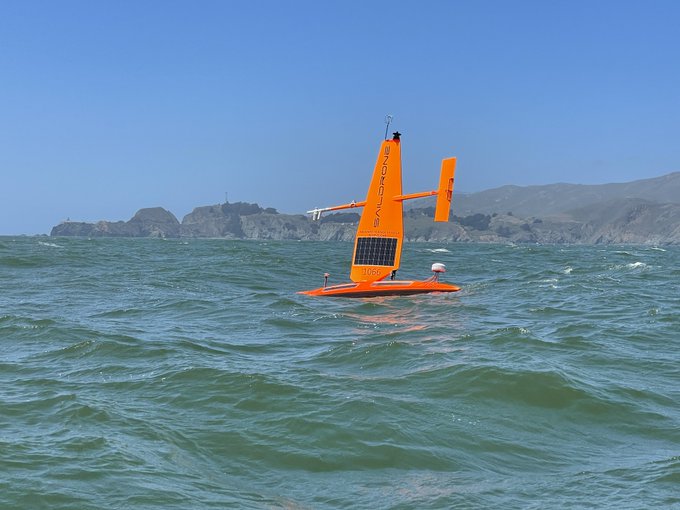Two Saildrone uncrewed surface vehicles (USV) launched from San Francisco Bay, US, on July 23, 2021, initiating a five-month research mission in the Eastern Tropical Pacific Ocean hurricane genesis region. The USV’s were launched as part of the Tropical Pacific Observing System (TPOS) Mission 4.
The saildrones will enter the region during its convective season, which extends from early June through to mid-October. While in the genesis region, the two drones will make repeat sections to observe environmental preconditions and storm activity that can lead to hurricane development.
Hurricanes that develop in this region affect moisture transport and subsequent rainfall along the west coast of North America. The current array of tropical moorings does not extend to the Eastern Tropical Pacific Warm Pool, and therefore fails to resolve the air-sea interaction that can fuel these storms.
Saildrone USVs not only have the ability to navigate this region but are capable of adaptive sampling to measure air-sea heat and momentum exchanges, and one drone will also be able to measure the air-sea carbon dioxide fluxes in this important under sampled region.
After spending approximately six weeks in the Eastern Tropical Pacific hurricane genesis region, the two drones will transit southward across a strong frontal region to the cold waters of the equator, where carbon dioxide tends to outgas, affecting global carbon budgets. The mission will include intercomparisons with moored buoys, surveys and repeat transects. In this region, models often have large biases affecting El Niño forecasts and the global hydrological cycle. These direct measurements of surface conditions and air-sea interactions will help identify the missing physics affecting these model biases.
This mission is funded in part by NOAA Office of Marine and Aviation Operations (OMAO), NOAA Global Ocean Monitoring and Observing (GOMO), and NOAA National Oceanographic Partnership Program (NOPP), which brings partners together from different NOAA line offices, universities, and industry, along with international partners from both Mexico and France.
For more details about this mission, please visit the OCS Saildrone TPOS 2021 Mission Blog.



